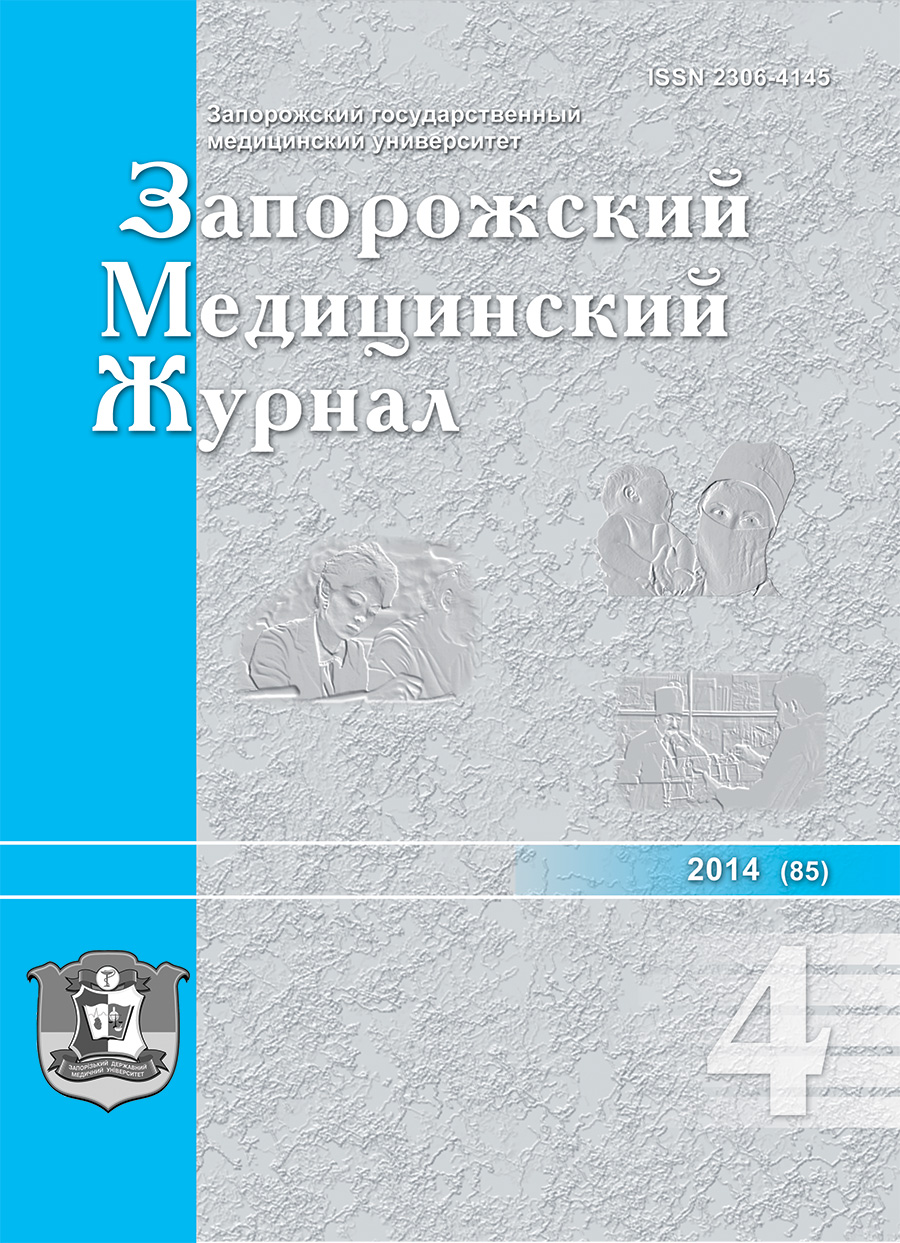Efficiency assessment for antihypertensive, hemodynamic, renal effects of adenosine-converting enzyme (ACE) inhibitors and irbesartan and impact on endothelial disfunction in patients with stage II hypertension
DOI:
https://doi.org/10.14739/2310-1210.2014.4.27220Keywords:
Hypertension, Endothelin-2, Nitric Oxide, Proteinuria, IrbesartanAbstract
Aim. To provide a comparative assessment of the impact of enalapril maleate and Irbesartanum on renal function, endothelium, hemodynamic and blood pressure in patients with essential hypertension stage II.
Methods and results. The results of the most part of meta-analyses demonstrate absolutely comparable efficiency of iACE [inhibitors of adenosine-converting enzyme] and angiotensin II-renin-blockers (ARBs) in respect of reduction in frequency of different cardiovascular diseases. However, attention should be drawn towards the fact that ARBs show substantially higher efficiency as compared to other classes of antihypertensive drugs by strength of nephroprotective effects. Especially when diabetic or hypertensive neuropathy progression is inhibited. The objective of this study was to investigate the microalbuminuria level and the endothelial function in patients with stage II hypertension and to compare the impact of ACE inhibitors and Irbesartan.
60 patients with stage II hypertension (HTN) before treatment and after 12 weeks therapy were examined. The key factor for selection was the presence of microalbuminuria (MAU). The group of patients with stage II HTN with MAU was divided into two groups: 30 patients were treated with ACE inhibitor, namely Enalaprili maleates “Enalapril” (I group) and 30 patients were treated with Irbesartan, namely “Aprovel” (II group) accordingly. It was established that the Irbesartan group showed significant reduction in albuminuria level from 127.1±26.3 μg/mL to 56.2±21.8 μg/mL (by 44%, Р<0.05), while the ACE-inhibitor group showed reduction from 125.3±21.5 μg/mL to 101.3±19.6 (Р<0.05). Thus, at the end of the treatment period the albuminuria level in the Irbesartan group was 44.8% lower than in the other group (Р<0.05). 60% of patients of this group and only about 30% of patients of the ACE-inhibitor group reached normal level of albuminuria. On comparing Е-1 level between the patients with stage II HTN of both groups it was revealed that reduction level of endothelin-I in the group treated with Irbesartan was 12% lower than in the group of patients treated with Enalapril. NО2 level as compared with the data before treatment and after administered therapy increased by 35% in case of treatment with Enalapril and by 42.5% in case of treatment with Aprovel. NО3 level increased by 21% and accordingly 29%, and NОх level – by 28% and 33% accordingly.This fact indicates that Irbesartan treatment results in improvement in renal functional state in patients with HTN what is revealed by highly significant reduction in albumin excretion in urine and is due to increase of functional renal reserve and so positively effects endothelial function.
Conclusion. This suggests that treatment with Irbesartanum increases renal functional reserve and has a positive effect on endothelial function.
References
Ocheretyanaya, N. (2012) Sartany v praktike vracha-kardiologa: al'ternativa i APF ili optimal'nyj vybor? [Sartana in practice cardiologist: an alternative to ACE inhibitors or the optimal choice?]. Zdorovia Ukrainy XXI storichcha, (21), 62–63. [in Ukrainian].
Makino, H., Haneda, M., Babazono, T., et al. (2008) Microalbuminuria reduction with telmisartan in normotensive and hypertensive Japanese patients with type 2 diabetes: a post-hoc analysis of The Incipient to Overt: Angiotensin II Blocker, Telmisartan, Investigation on Type 2 Diabetic Nephropathy (INNOVATION) study. Hypertens. Res., 31(4), 657–664. doi: 10.1291/hypres.31.657.
Ruilope, L.M., Redón, J., & Schmieder, R. (2007) Cardiovascular risk reduction by reversing endothelial dysfunction: ARBs, ACE inhibitors, or both? Expectations from the ONTARGET Trial Programme. Vasc. Health Risk. Manag., 3(1), 1–9.
Matchar, D. B., Mc Crory, D. C., Orlando, R. A. (2008) Systematic review: comparative effectiveness of angiotensin-converting enzyme inhibitors and angiotensin II receptor blockers for treating essential hypertension. Ann.Int.Med.,148, 16–29.
Kunz, R., Friedricy, C., Wolbers, M., et.al. (2008) Meta-analysis: effect of monotherapy and combination therapy with inhibitors of the renin-anhiotensin system on proteinuria in renal disease. Ann.Int.Med, 148, 30–48.
Yilmaz, M. I., Saglam, M., Qureshi, A. R., et al. (2008) Endothelial dysfunction in type-2 diabetics with early diabetic nephropathy is associated with low circulating adiponectin. Nephrol. Dial. Transplant, 23(5), 1621–7. doi: 10.1093/ndt/gfm828.
Sawada, T., Yamada, H., Dahlof, B., & Matsubara, H. (2009). Effects of valsartan on morbidity and mortality in uncontrolled hypertensive patients with high cardiovascular risks: KYOTO HEART Study. European Heart Journal, 30(20), 2461–2469. doi:10.1093/eurheartj/ehp363.
Baumhakel,M., & Schlimmer, N. (2008) Effect of irbesartan on erectile function in patients with hypertension and metabolic syndrome. Int J Impot Res., 20(5), 493–500. doi: 10.1038/ijir.2008.28.
Bramlage, P., Durand-Zaleski, I., & Pirk, O. (2009) The value of irbesartan in the management of hypertension. Expert Opin Pharmacother, 10(11), 1817–31. doi: 10.1517/14656560903103820.
Downloads
How to Cite
Issue
Section
License
Authors who publish with this journal agree to the following terms:
Authors retain copyright and grant the journal right of first publication with the work simultaneously licensed under a Creative Commons Attribution License that allows others to share the work with an acknowledgement of the work's authorship and initial publication in this journal. 

